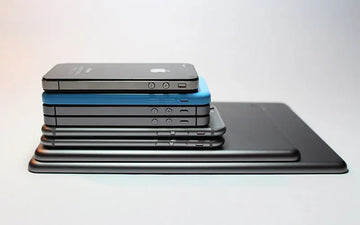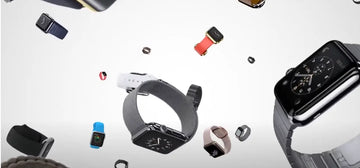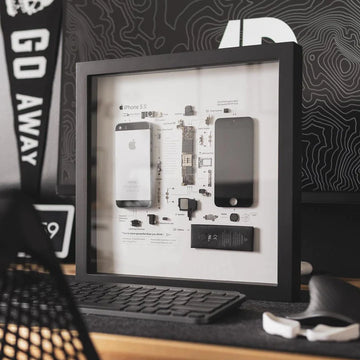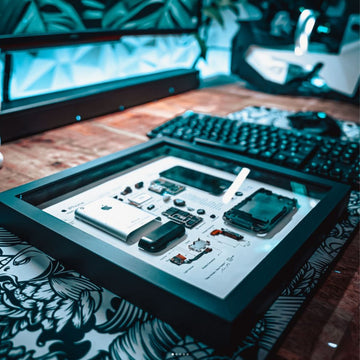“The only way to do great work is to love what you do.” This came from Jobs' famous commencement speech at Stanford. Creating the iPhone should be one of the things Jobs loved in his life.

Apple iPhone 2G (2004)
The first generation of iPhones was secretly developed within Apple in 2004 under the code name “Project Purple”. Jobs' initial idea, it is said, was to make a tablet similar to the iPad. Halfway through, he found it might be more fun to make a smartphone.
So the iPhone was the product that planted the first seeds. In the development of the iPhone, AT&T has given Apple a great help. In exchange, AT&T has been granting exclusive rights to the iPhones for four years.
On Jan 9th, 2007, Jobs introduced the world to the iPhone at the Macworld conference. The first generation of iPhones has a 4GB version, which give us a little surprise. By 6 p.m. on June 29 of that year, thousands of Apple enthusiasts across United States had finally ended their long waits to snap up their first-generation of iPhones in just 60 minutes. The first generation of iPhones sold a total of 6,124,000 units.
The most successful things about the iPhone is that it doesn't have a keyboard. The innovation of multi-touch technology and touch screen interface can be said to have ushered in the age of smartphones. Of course, the first generation of iPhones had many shortcomings, which was certainly not an excellent product, but it ushered in a new era.
Apple iPhone 3G (2008)
On July 11, 2008, Apple officially launched the iPhone 3G.
It's worth noting that the new operating system, the iPhone OS 2.0, which supports the App Store for the first time, has long-term and significant implications for Jobs. So while this generation of iPhones has not improved significantly in hardware, but it's a historic turning point for Apple in terms of the software ecosystem.
At Apple's annual conference, Jobs provided developers with a corresponding development kit with the help of the upgrade of the new system. This step piece laid the foundation for a unified App Store software empire. At the same time, it also feeds many excellent iOS developers.
For the iPhone 3G, it looks like Jobs didn't spend much on the product. But in his mind, a more intricate blueprint for the iPhone is being woven.

Apple iPhone 3GS (2009)
11 months later, at the new Apple's annual conference, Jobs brought us the new iPhone 3GS. Compared to the previous iPhone 3G, the iPhone 3GS has improved significantly in terms of battery life, camera pixels, and network transfer rates.
This time, Jobs began to build on his hardware: using a CPU with a frequency of 833MHz (actual down to 600MHz), a 150MHz GPU, and the first high-capacity version of 32GB. So far, the iPhone is a suit, with a look of adults. In the market, also occupied a place, has won a wave of Apple fans recognition and pursuit.
Jobs, on the other hand, is quietly plotting a major change.

Apple iPhone 4 (2010)
Before introducing the iPhone 4, allow us to say: This is so handsome!
"The iPhone redefines the phone, and the iPhone 4 redefines the iPhone."
At Apple's developer conference in 2010, Jobs gave us enough shock. The redesigned look of the iPhone 4 may be one of the most successful phones in Apple's history. The iPhone 4 features a metal mid-frame, front and rear double-sided glass design, making it the thinnest phone in the world at the time.
It was a work of art, and the appearance at the launch even caused screams from the crowd. In addition to its super-high face value, the iPhone 4 uses the Apple A4 processor on the previous iPad. For the first time, the front-facing camera and flash were installed, and the main camera was upgraded to 5 megapixels.
What’s more, Jobs did a heinous thing on the iPhone 4: for the first time, with a Retina display on the phone, the pixel density exceeded the human eye recognition limit to reach 326PPI. After that, when we turn to other phone screens, we always wonder why they're hitting mosaics.
In terms of software systems, this generation of operating systems is finally referred to simply as iOS. By October of that year, the App Store had more than 300,000 apps. Jobs's blueprint for his empire is clear.
Final
On August 25, 2011, Jobs wrote to resign as Apple's chief executive. On October 4th of the same year, Apple released the iPhone 4s. The next day, Jobs died.
Jobs is gone, but the story of the iPhone continues: the iPhone 5, the iPhone 5s, the iPhone 5c, the iPhone 6, the iPhone 6 Plus and so on.
These have changed our lives, our world.

Every iphone has been our bosom buddy for years. It takes part in almost every important occasion in our life. Impress and inspire your memories by reconstructing the old iPhone on a framed wall art poster. This tech frame with deconstructed phone parts is perfect for display your memorable device. Your old iphone can be turned into a beautiful wall decoration.
A perfect gift for your geeky relatives and friends!
What do you think of this fun iPhone Framed Artwork?










